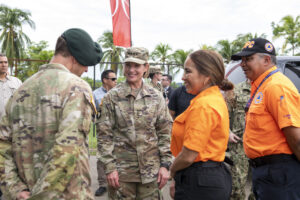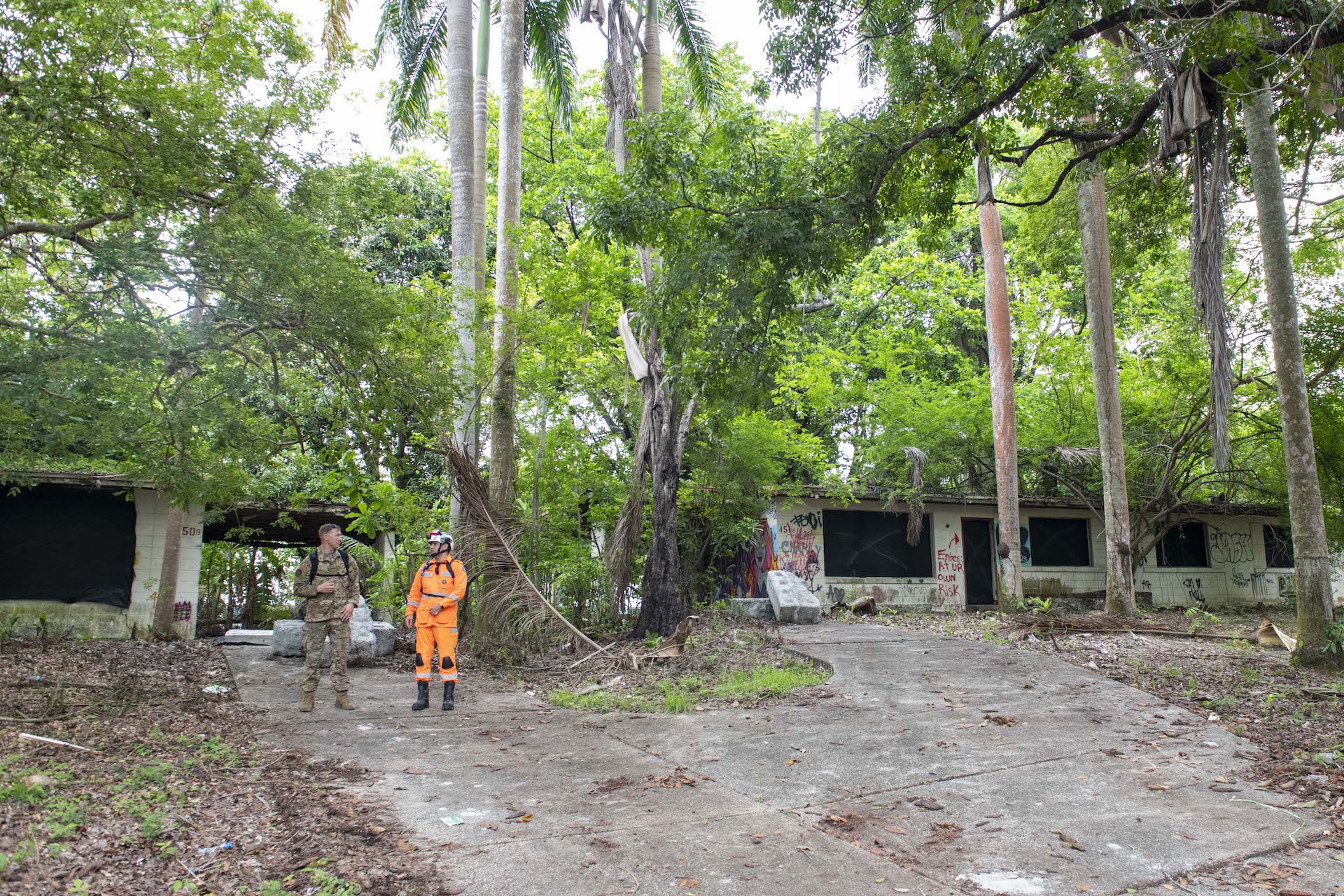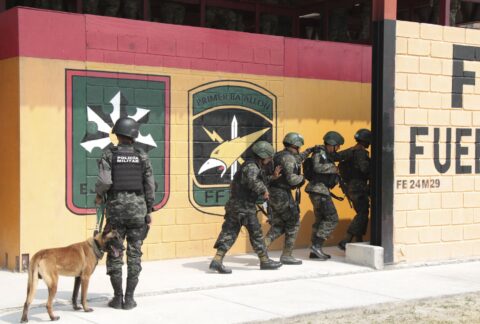From earthquakes and volcanic activity to forest fires and tropical storms, the variety of natural disaster threats that Central America constantly faces is endless.
From June 13-16, members of Joint Task Force Bravo (JTF-Bravo), located out of Soto Cano Air Base in Honduras, traveled to Panama City to participate in a multinational exercise aimed at finessing the relationships and processes that will be needed to work with regional partners during real-world emergencies.
Hosted by the Coordination Center for the Prevention of Disasters in Central America and the Dominican Republic (CEPREDENAC), the exercise brought 16 countries together with the goal of improving multinational capacities in the protection of life, humanitarian coordination, and joint response.
The exercise scenarios layered upon each other: a 7.5 magnitude earthquake and a tropical storm caused rainfall, flooding and critical infrastructure, while a cyberattack, oil spill, and avian flu caused different types of chaos.
Participating countries included Argentina, Canada, Colombia, Costa Rica, Dominican Republic, El Salvador, Guatemala, Honduras, Israel, Japan, Mexico, Nicaragua, Panama, and the United States, and among others.
“A disaster doesn’t know about borders,” said Claudia Herrera, CEPREDENAC secretary. “We are going to have the opportunity to work together to identify […] the vulnerabilities the Central America region faces every year. International assistance is very important for us to build our capacities. Prior to a disaster occurring, we can have the opportunity to identify our strengths and also our challenges.”

As one of U.S. Southern Command’s (SOUTHCOM) most deployable assets in Central America, JTF-Bravo had two missions. First, they were able to practice rapidly deploying its SOUTHCOM Situational Assessment Team’s (SSAT) in response to humanitarian or disaster response efforts across the region.
“As JTF-Bravo has been in the Central American region for 40 years, we have responded to assist our partners many times during disasters that have exceeded their national capacity to respond,” said U.S. Army Major Robert Mixon, director of J-9 (Civil-Military Operations) at JTF-Bravo. “By participating with 16 other nations in this scenario, together in the heat, rain, mud, and fatigue of 36 hours of continuous operations, we demonstrated that we are in this together and we will support our friends and neighbors as we have in the past; both in training and in times of need.
“The bonds formed during this scenario will transcend geographical boundaries and the relationships formed will serve to assist in a response that more efficiently and more expediently saves lives if disaster impacts in the future,” Maj. Mixon added.
Second, JTF-Bravo was able to provide liaison officers (LNOs) across several specialized fields to advise other partner nations during some of the scenarios, including a fire protection specialist, a Survival, Evade, Resistance and Escape specialist, and a doctor. These LNOs were able to observe and provide input before, during, and after, about the methods used.
An extra bonus was a scenario that involved SOUTHCOM and U.S. Northern Command (NORTHCOM), something not exercised as often.
In the closing ceremony held June 16, U.S. Army General Laura J. Richardson, SOUTHCOM commander, took the opportunity to thank all the partner nations for their coordination, cooperation, and collective commitment to democracy and taking care of people.
“CEPREDENAC has increased the preparedness and resiliency of the region. Through its unwavering dedication to building a safer and more resilient world, CEPREDENAC has strengthened both relationships and civil-military cooperation,” said Gen. Richardson. “The efforts undertaken by CEPREDENAC over the course of the last 35 years are now more relevant than ever.
“It is because of this laser-focus vision and tireless efforts to enhance civil and military cooperation, and build regional humanitarian assistance and disaster response capacity,” she added. “You have and you will continue to save lives through this effort […]. Please know that United States Southern Command is committed to being part of this effort.”









